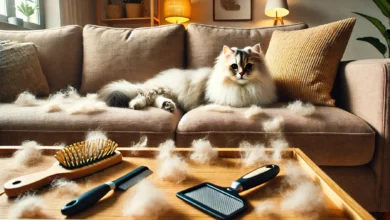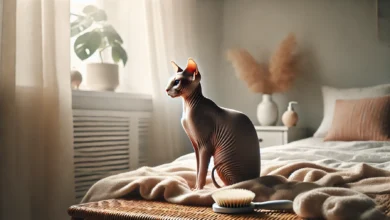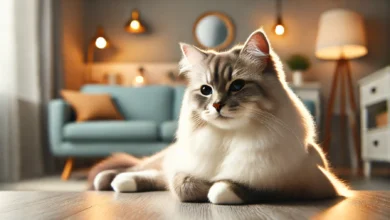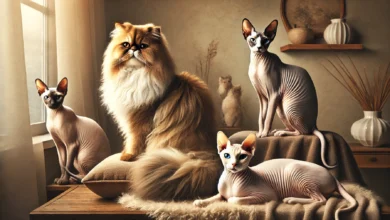Exploring Grooming Accessories for Cats
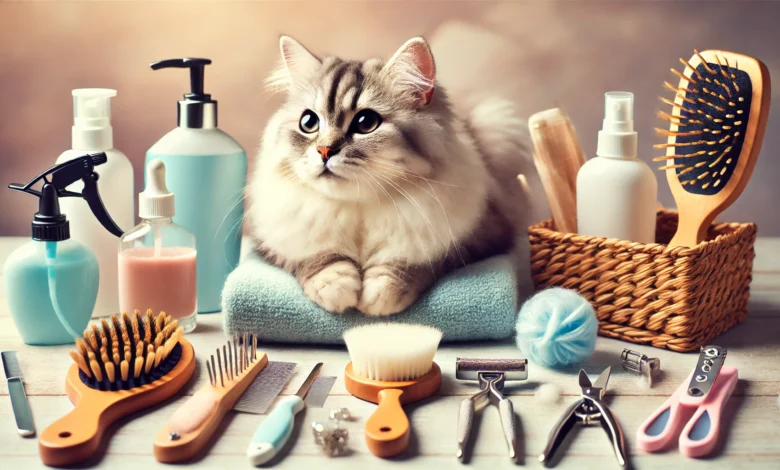
Grooming is an essential way to keep your cat healthy and happy.
Whether your cat has short fur, long fur, or no fur at all, grooming accessories can make a huge difference in their general well-being.
Although many cats are naturally clean animals, they do benefit from a variety of grooming tools that help maintain their coat, nails, and skin.
As a cat owner, it is vital to choose appropriate grooming accessories that suit the needs and preferences of your cat.
This article will discuss various types of grooming accessories available, their uses, and which ones every cat owner should have.
Table of Contents
Essential Grooming Accessories Every Cat Owner Should Have
If you have ever wondered which grooming tools are a must-have for your cat, you are not alone.
With so many options, it can sometimes feel overwhelming to decide what is truly necessary.
But don’t worry – we have got you covered.
Let’s delve into the essential grooming accessories every cat owner should have in their toolkit.
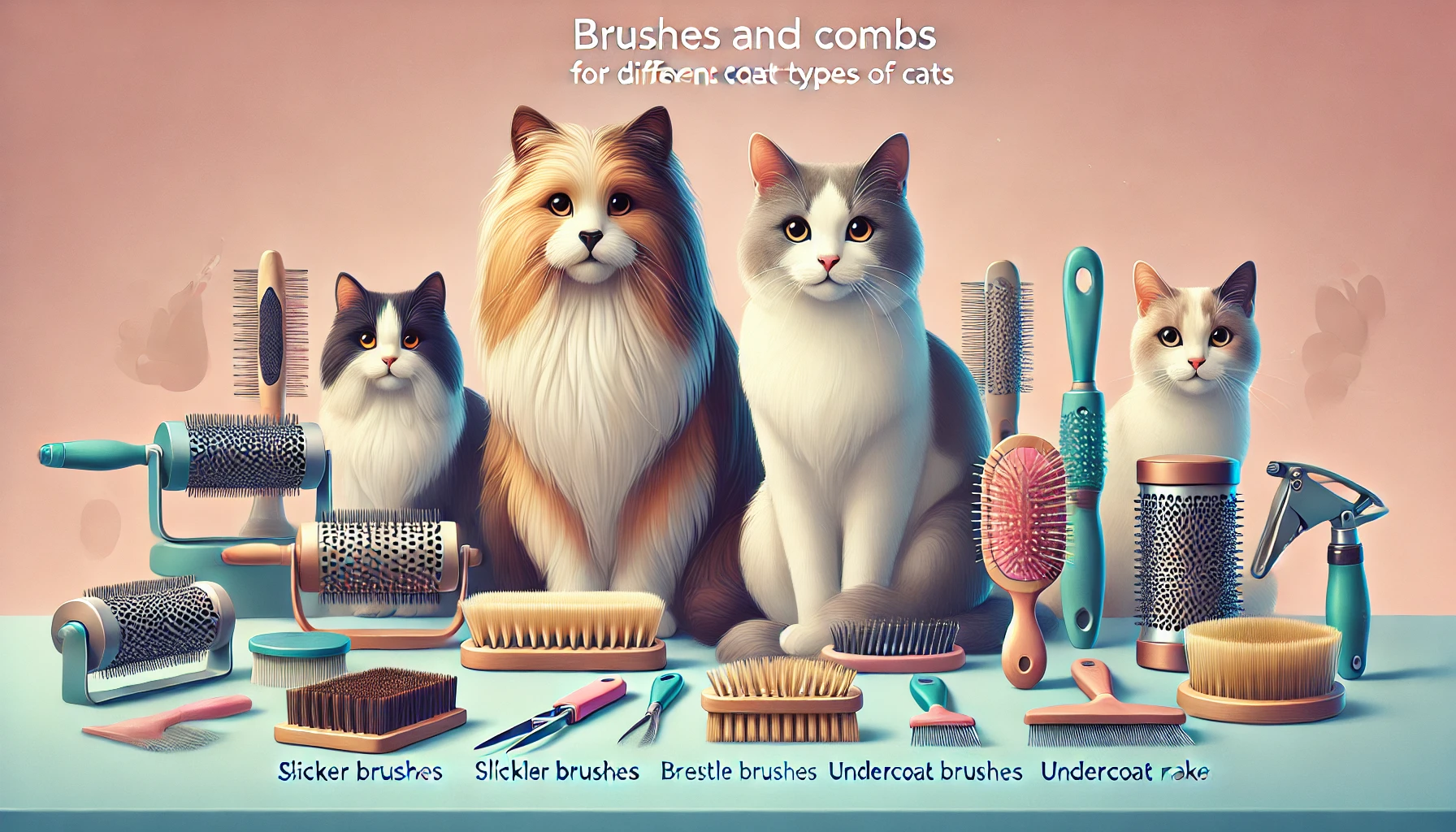
Brushes and Combs for Different Coat Types
The most important grooming accessories include a good brush or comb.
The type of brush you use depends on the coat type your cat has.
Long-haired breeds, such as Persians and Maine Coons, require thorough grooming to prevent tangles and mats, while short-haired breeds, like Siamese and British Shorthairs, benefit from regular brushing to remove loose fur.
Here are a few common types of brushes and combs that can make the grooming process easier:
- Slicker Brushes: Excellent for clearing tangles and mats in long-haired cats.
- Bristle Brushes: Gentle enough for short-haired cats, they help smooth natural oils into the skin and remove loose fur.
- Undercoat Rakes: Perfect for cats with thick double coats, these tools help remove dead hair from the undercoat.
- Flea Combs: Ideal for locating and removing fleas, these combs are a great addition to any grooming kit.
Choosing the right brush or comb based on your cat’s coat type not only keeps their fur looking shiny but also reduces shedding.
This turns grooming sessions into a pleasant experience for both you and your cat.
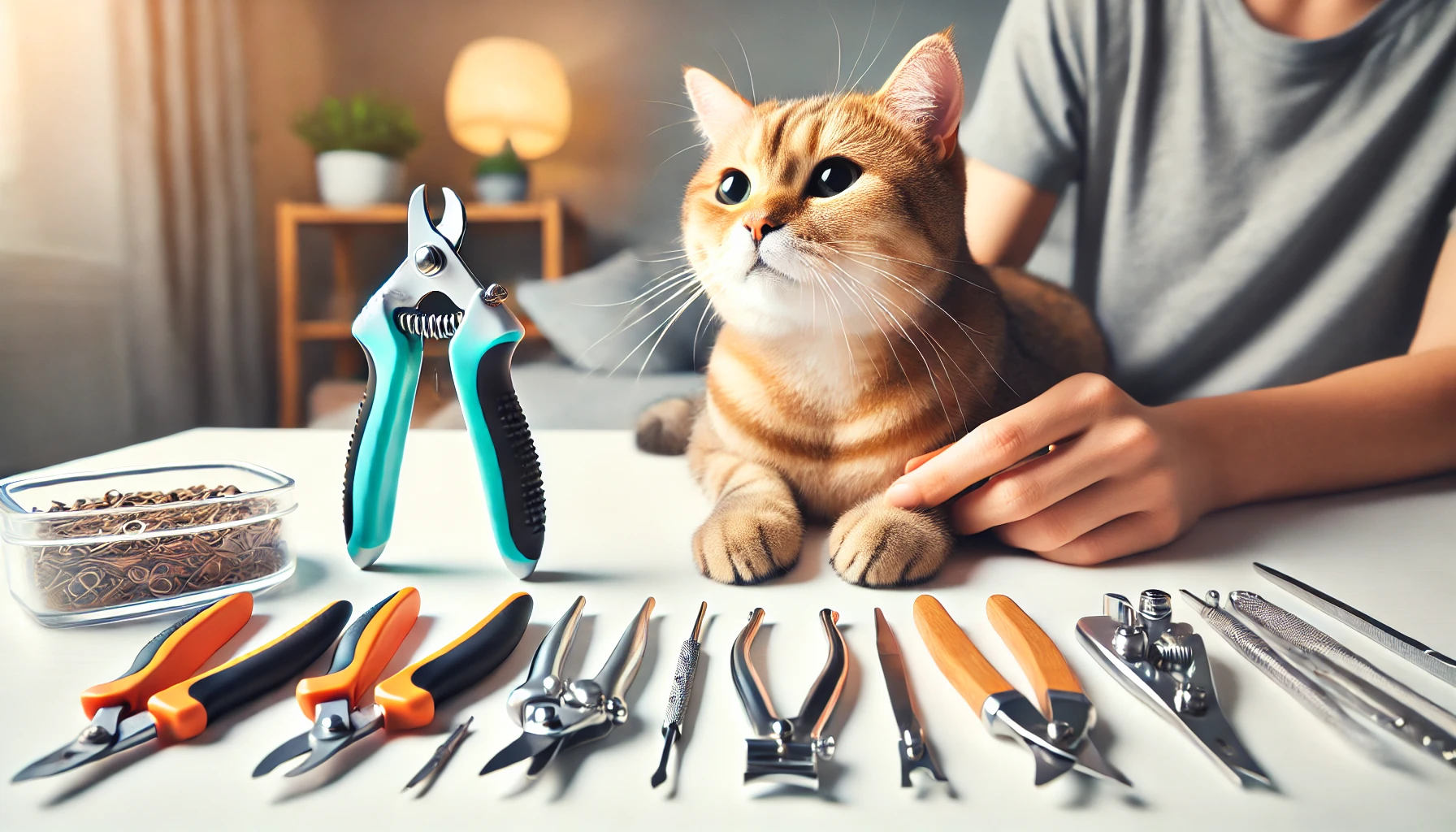
Nail Clippers and Trimmers for Safe Grooming
An equally important grooming accessory for cats is a good pair of nail clippers or trimmers.
Regular nail trimming prevents overgrown nails, which can be very painful for your cat.
Overgrown nails may curl into the paw pads or make walking difficult, so it is always important to maintain them at an appropriate length.
When choosing nail clippers or trimmers, make sure they are comfortable to use and specifically designed for cats.
Cat-specific clippers are smaller and finer, ensuring safety while trimming your cat’s nails without causing harm.
Common Types of Nail Trimming Tools for Cats:
- Scissor-Style Clippers: Small clipper scissors that are very easy to use for precise cuts. They work well for cats with small- to medium-sized nails.
- Guillotine-Style Clippers: These have a small hole where you insert the cat’s nail, and then press down to cut when you squeeze the handle. They provide more control but require a steady hand.
- Electric Nail Grinders: These grinding tools gradually wear down your cat’s nails and are a great alternative to clippers. They work well for cats sensitive to clippers but require caution and patience.
It is best to trim your cat’s nails in a quiet and peaceful environment to reduce any potential startle.
Start by introducing clippers gradually, using treats and gentle strokes to help your cat adjust.
Regular nail trimming keeps your cat’s paws healthy and prevents them from damaging your furniture or household items.
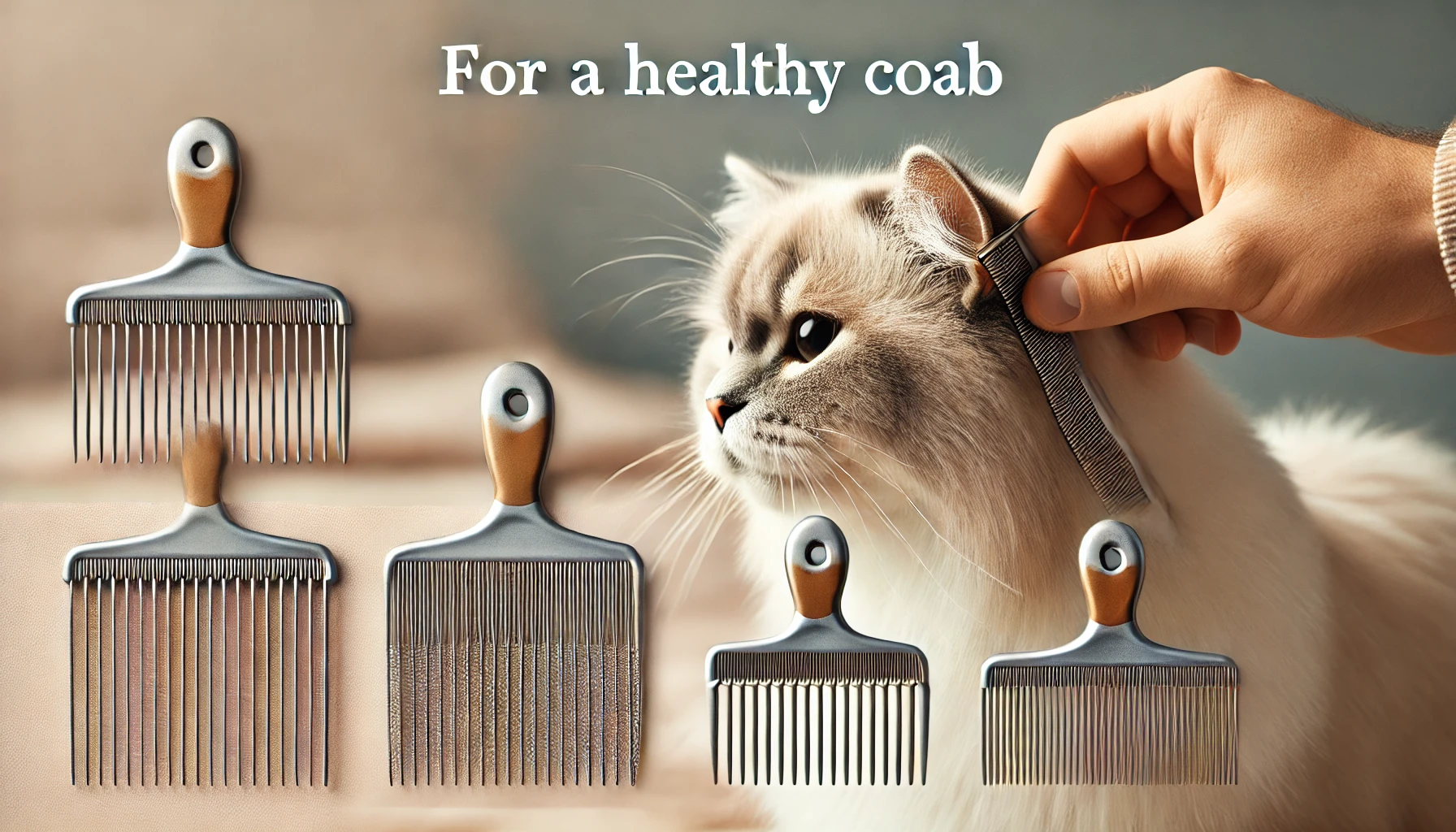
Flea Combs for a Healthy Coat
A flea comb is an important grooming tool, ensuring a healthy and parasite-free coat for your feline friend.
Besides causing itching and discomfort, fleas can lead to serious health issues such as skin infections, anemia, or even the transmission of tapeworms.
A flea comb is an efficient tool that allows you to detect and remove fleas from your cat’s coat without using harsh chemicals.
Flea combs are designed with tightly spaced teeth that catch and extract fleas, flea dirt, and eggs from your cat’s coat.
Regular use of the flea comb enables you to monitor your cat’s coat for any signs of infestation and take swift action if necessary.
These combs may also prevent future outbreaks by keeping your cat’s coat clean and well-groomed.
When using a flea comb, focus on areas like the neck, behind the ears, and the base of the tail—places where fleas are most likely to hide.
Keep a bowl of soapy water beside you to immediately dunk the comb, killing any fleas you capture.
This prevents fleas from jumping back onto your cat or spreading throughout your home.
Benefits of Using Flea Combs:
- Non-Toxic Solution: Flea combs are a chemical-free way to remove fleas, making them safe for cats sensitive to certain treatments.
- Early Detection: Regular combing allows you to detect fleas early, before a full infestation occurs.
- Gentle on the Coat: Flea combs are gentle on your cat’s skin and fur, providing a soothing grooming experience.
- Versatile Use: They are suitable for both long-haired and short-haired cats.
Incorporating a flea comb into your grooming routine will keep your cat’s coat healthy, shiny, and free of pests.
This simple tool helps you stay ahead of potential flea issues, ensuring your cat’s comfort and well-being.
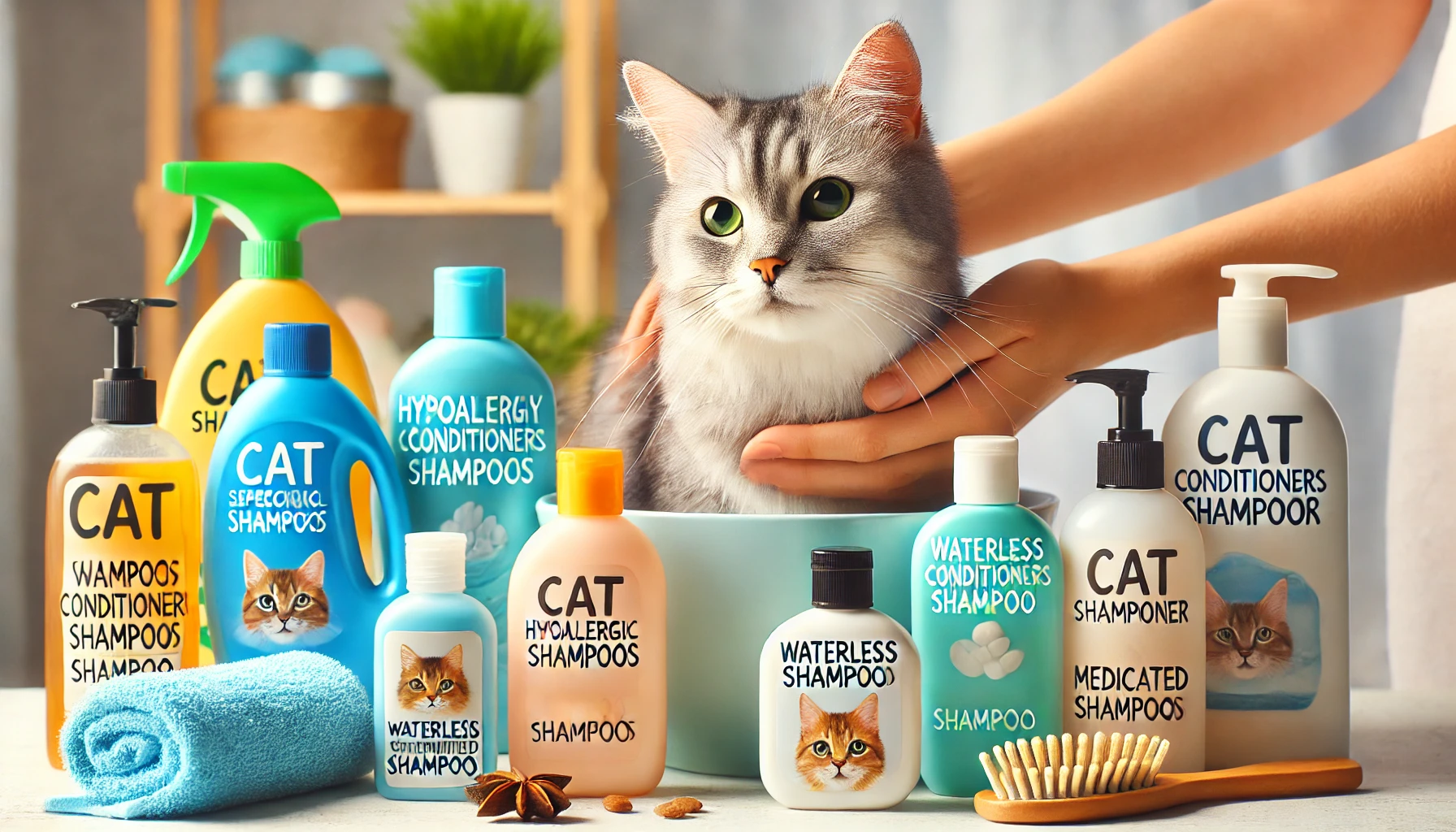
Shampoos and Conditioners for Cats
While cats are largely self-sufficient, there are moments when a good shampoo and conditioner become necessary to keep their coat clean and healthy.
Whether your cat has gotten into something messy, has a skin condition, or simply needs extra help with shedding, using the right shampoo and conditioner can make a big difference in their grooming routine.
It’s important to choose shampoos and conditioners specifically formulated for cats, as those intended for humans or dogs can irritate the sensitive skin of cats.
The wrong product may lead to irritation, dryness, or even allergic reactions.
Shampoos for cats are formulated to be gentle while effectively cleaning their fur and skin.
Types of Shampoos for Cats:
- Hypoallergenic Shampoos: Suitable for cats with sensitive skin or allergies, these shampoos are mild and free from perfumes and harsh chemicals.
- Medicated Shampoos: Designed to treat specific skin issues like dermatitis, fungal infections, or flea infestations. Always consult with a veterinarian before using medicated shampoos.
- Waterless Shampoos: Perfect for cats that dislike water, these shampoos come in spray or foam form and allow you to clean your cat without the need for rinsing.
- Shed Control Shampoos: Formulated to reduce excessive shedding, leaving your cat with a smooth coat and minimizing shedding.
Why Use Conditioners for Cats?
Conditioners work alongside shampoos by moisturizing your cat’s coat and skin, making the fur softer and easier to manage, particularly for long-haired breeds or cats prone to tangling.
Cat conditioners are lightweight and non-greasy, ensuring your cat’s coat stays healthy and shiny.
The right shampoo and conditioner incorporated into your cat’s grooming routine can lead to a healthier, shinier coat and a more comfortable, happy cat.
Always be sure to choose products designed specifically for cats to avoid irritation or allergic reactions.
Having the right grooming tools for your cat ensures their coat stays healthy and manageable, reducing shedding and potential discomfort. Regular grooming also strengthens the bond between you and your feline companion.
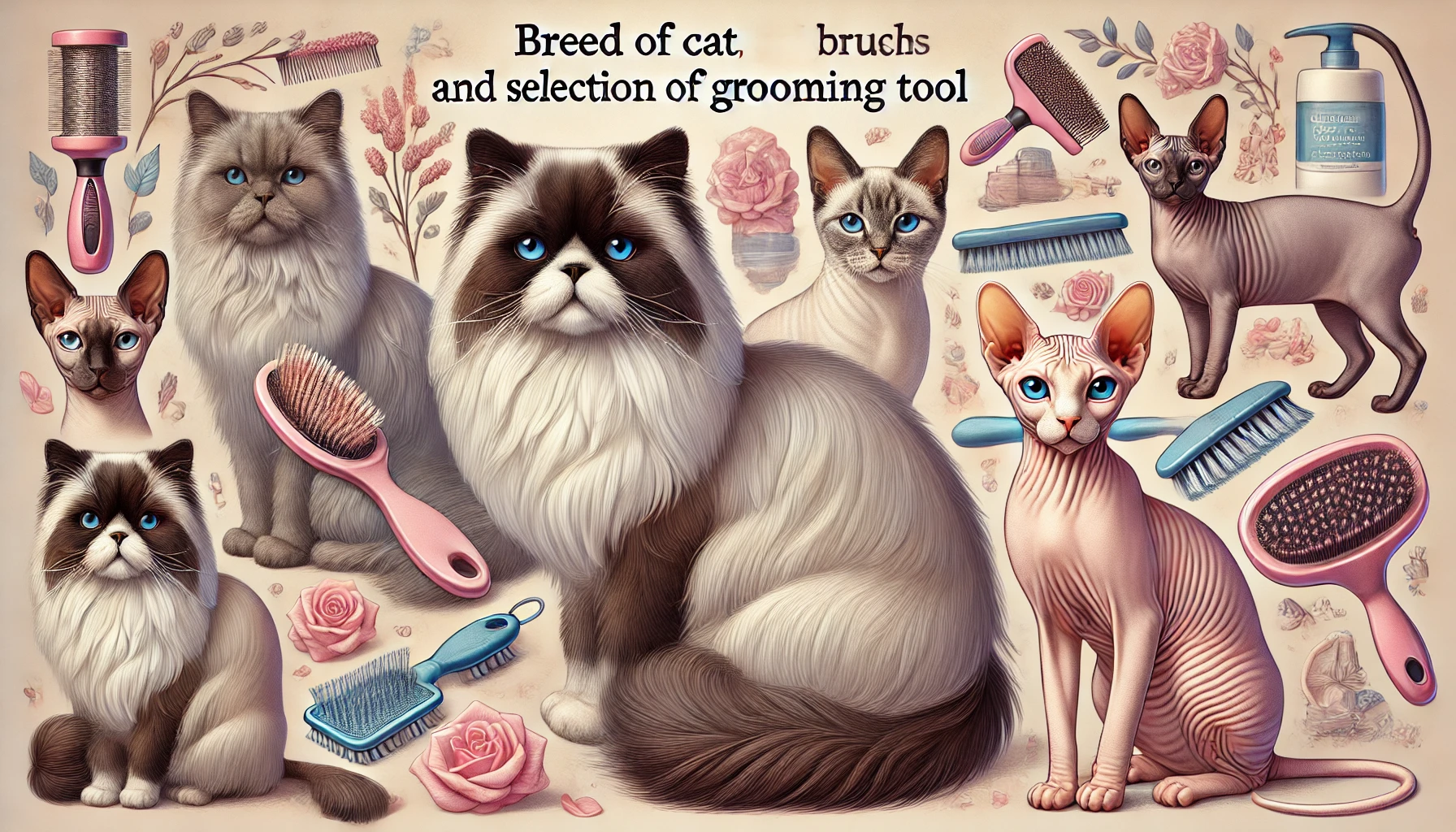
Breed of Cat and Selection of Grooming Tool
Just like human beings, each cat is different, and their grooming needs are determined by their breed or coat type.
Whether your cat is short-haired, long-haired, or even hairless, choosing the right grooming tools is essential to keeping your feline friend healthy and happy.
Using the wrong grooming equipment may cause discomfort or even lead to skin problems, so tailoring your grooming routine based on the cat’s breed is important.
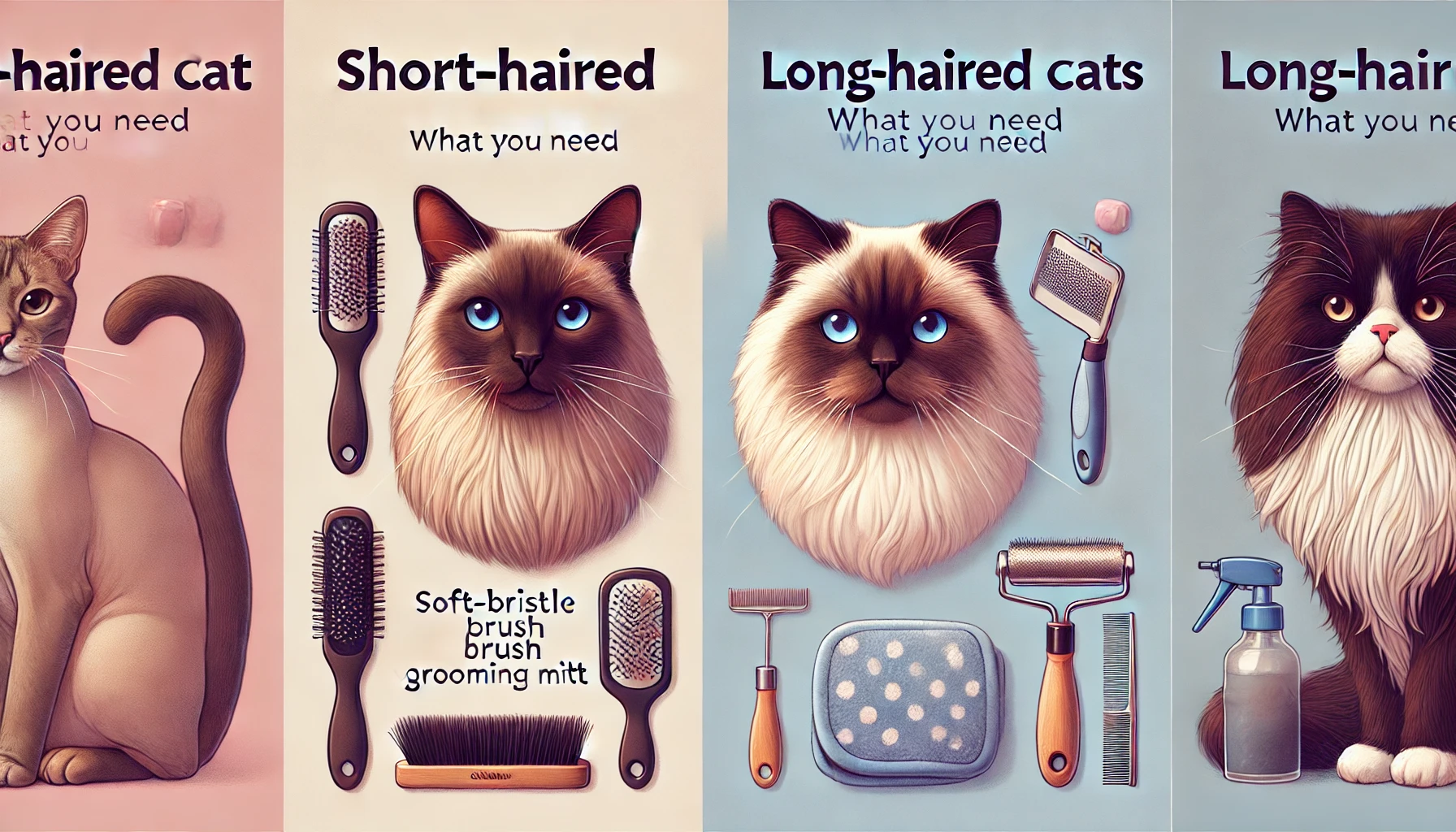
Short-Haired vs. Long-Haired Cats: What You Need
Short-haired cats, such as the Siamese or American Shorthair, generally require less grooming than their long-haired counterparts.
However, regular brushing helps reduce shedding and prevents loose hair from accumulating in the cat’s system, which can lead to hairballs.
For short-haired breeds, a soft-bristle brush or rubber grooming mitt will suffice to keep their coat smooth, shiny, and free of dead hair.
Long-haired breeds, like the Persian or Maine Coon, need extra grooming to prevent mats and tangles from forming in their coats.
Specialized grooming tools, including a slicker brush and wide-tooth comb, are necessary for managing their long fur.
Regular grooming keeps their coat nice and comfortable, avoiding painful mats.
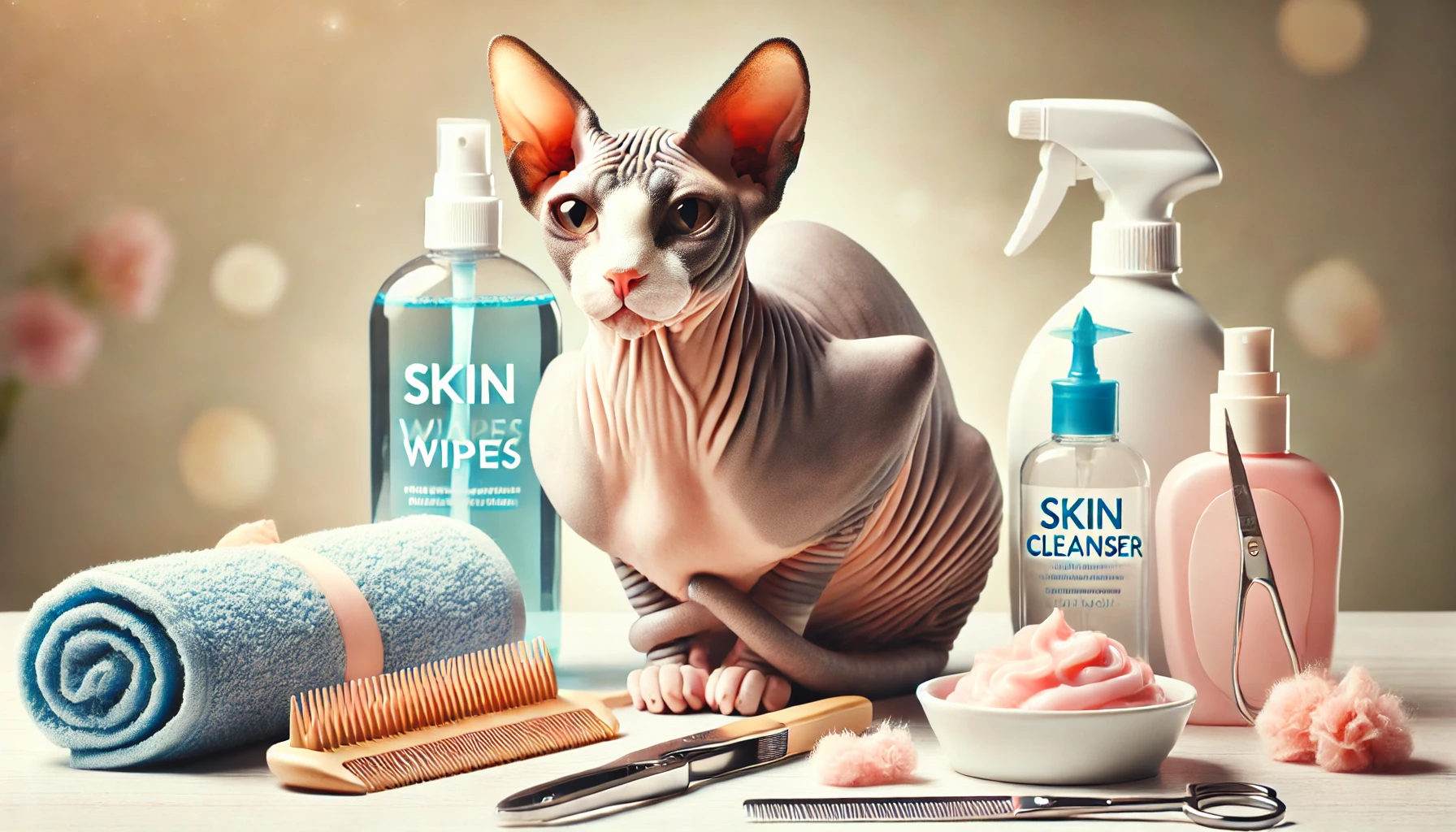
Grooming Tools for Hairless Cats
Hairless cats, such as the Sphynx, require a different approach to grooming since they have no fur to brush.
Instead, attention should be focused on their skin.
Hairless breeds tend to have oilier skin and can develop rashes or irritations without proper grooming.
A gentle wipe or a mild, cat-friendly cleanser should be used to keep their skin clean.
Some hairless cats may also benefit from moisturizing lotions to prevent dry, flaky skin.
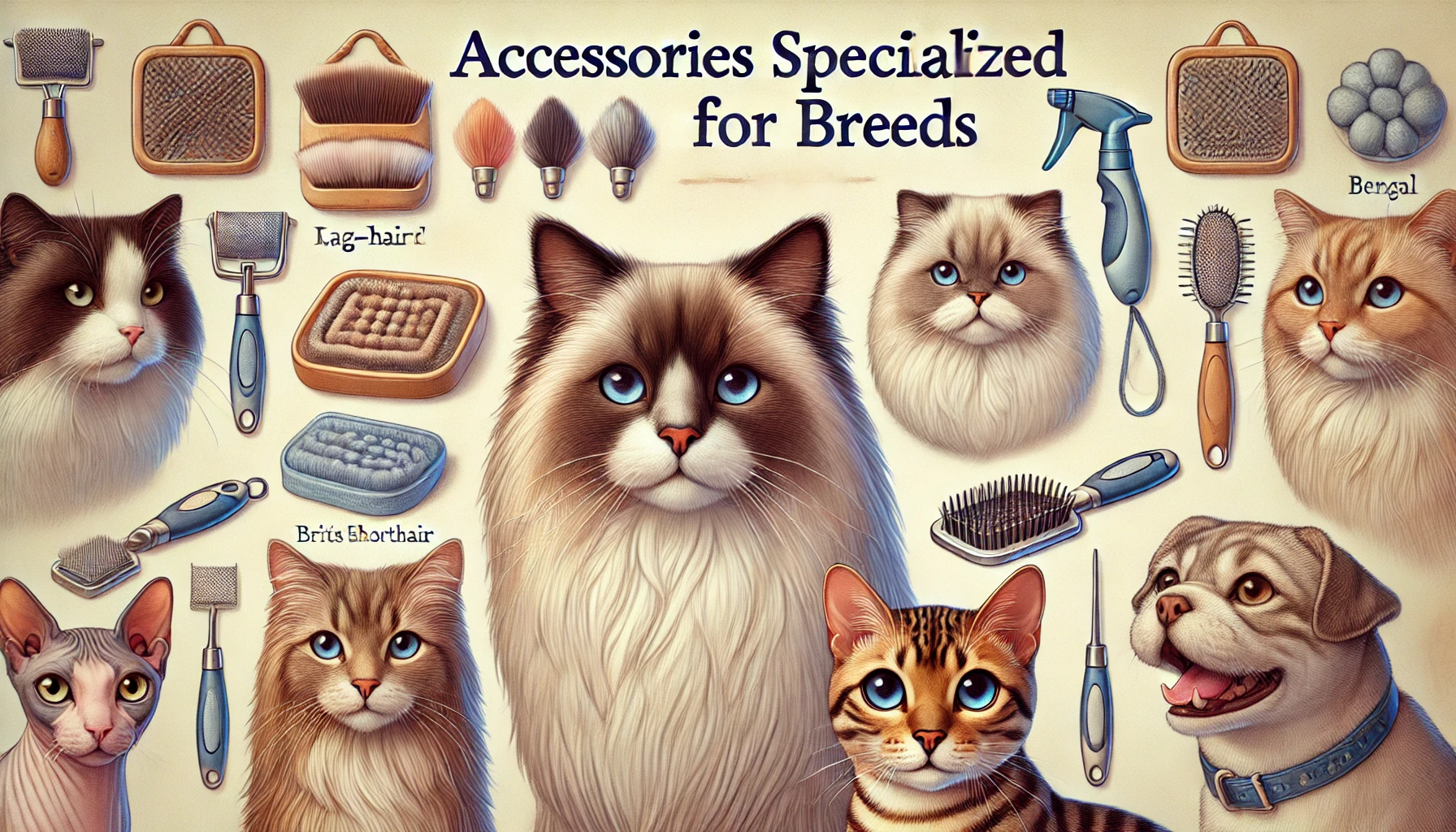
Accessories Specialized for Breeds
Certain breeds have unique grooming needs.
For example, the semi-long fur of the Ragdoll requires regular brushing and occasional trimming to prevent tangling.
Exotic Shorthairs, with their dense coats, benefit from frequent de-shedding using specialized grooming tools to reduce shedding.
Understanding the needs of your cat’s breed ensures you are well-prepared with the right tools and grooming methods to maintain their coat and skin in optimal condition.
Grooming your cat with the appropriate tools for its breed will keep its coat healthy, shiny, and free from problems such as mats, tangles, or dry skin.
Regular grooming not only maintains your cat’s overall health but also strengthens the bond between you and your feline friend.
Select grooming tools based on your cat’s breed to ensure their coat and skin stay healthy. Each breed has different grooming needs, so using the right tools can prevent discomfort and skin issues.
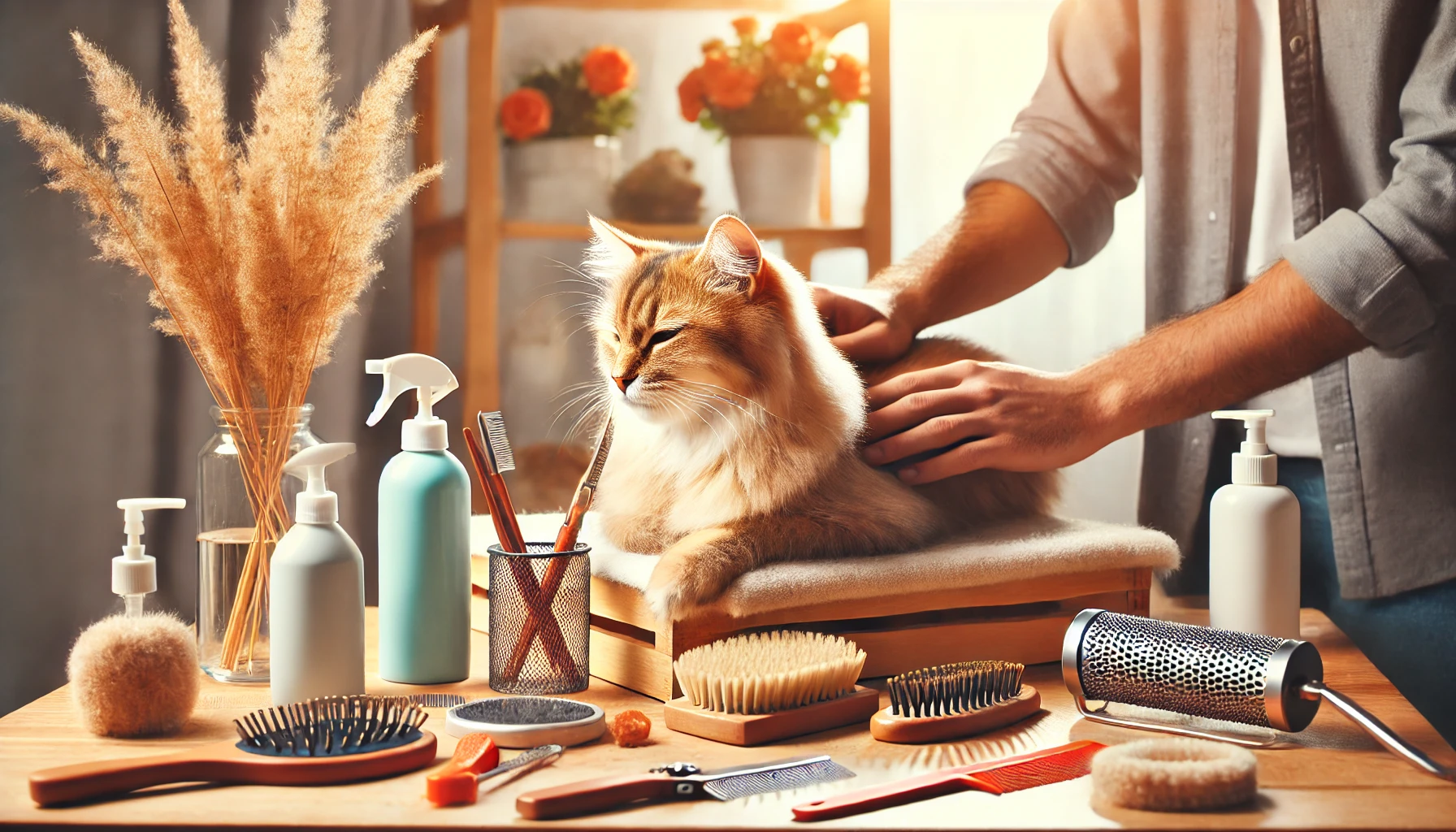
Final Thoughts on Choosing the Best Grooming Accessories for Cats
Grooming does not only make your feline friend look good, but it is also a way of ensuring their health and happiness.
Properly choosing the right grooming accessories for your cat will make the experience much easier and more pleasant for both the cat and the owner.
Whether your cat has short hair, long hair, or no hair at all, the tools you use will make a significant difference in how well their coat and skin are taken care of.
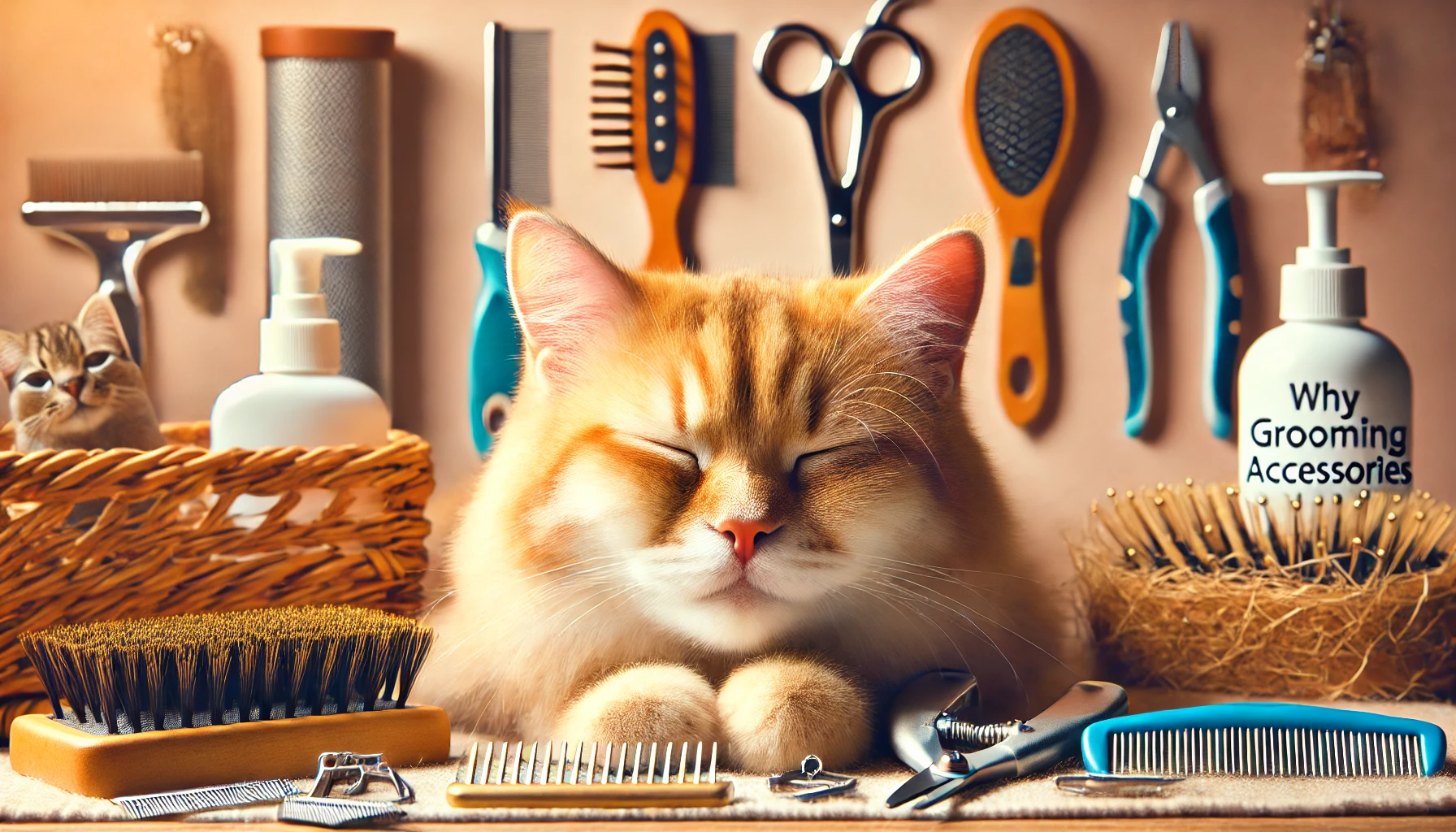
Why Grooming Accessories Matter
The right grooming accessories can help you and your cat avoid distress caused by matting, excessive shedding, and skin infections.
Regular use of the appropriate tools will ensure comfort for your cat and maintain a healthy coat.
Grooming is also an opportunity to bond with your cat and monitor their health more closely, allowing you to detect skin issues, fleas, or abnormalities early on.
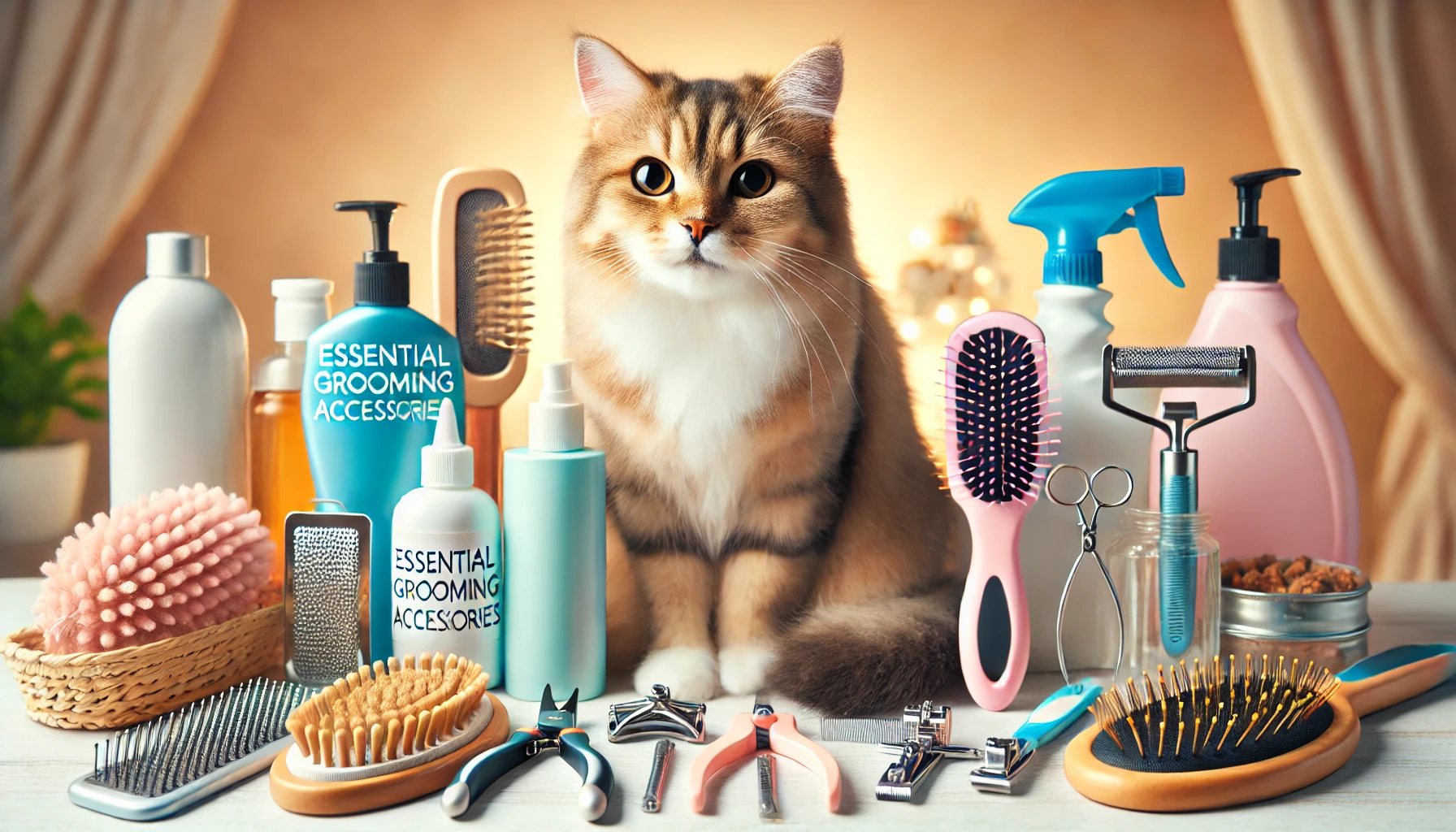
Essential Grooming Accessories Recap
- Brushes and Combs: Regular brushing for both short-haired and long-haired cats prevents shedding, removes dead fur, and keeps their coat smooth and tangle-free.
- Nail Clippers and Trimmers: Essential for trimming your cat’s claws to prevent overgrown nails that can cause discomfort or injury.
- Flea Combs: A simple, non-toxic way to monitor and remove fleas, a flea comb is a must-have for every cat owner.
- Shampoos and Conditioners: Cat-specific shampoos and conditioners keep their coat clean and healthy without causing skin irritation. Waterless shampoos are especially useful for cats that dislike water.
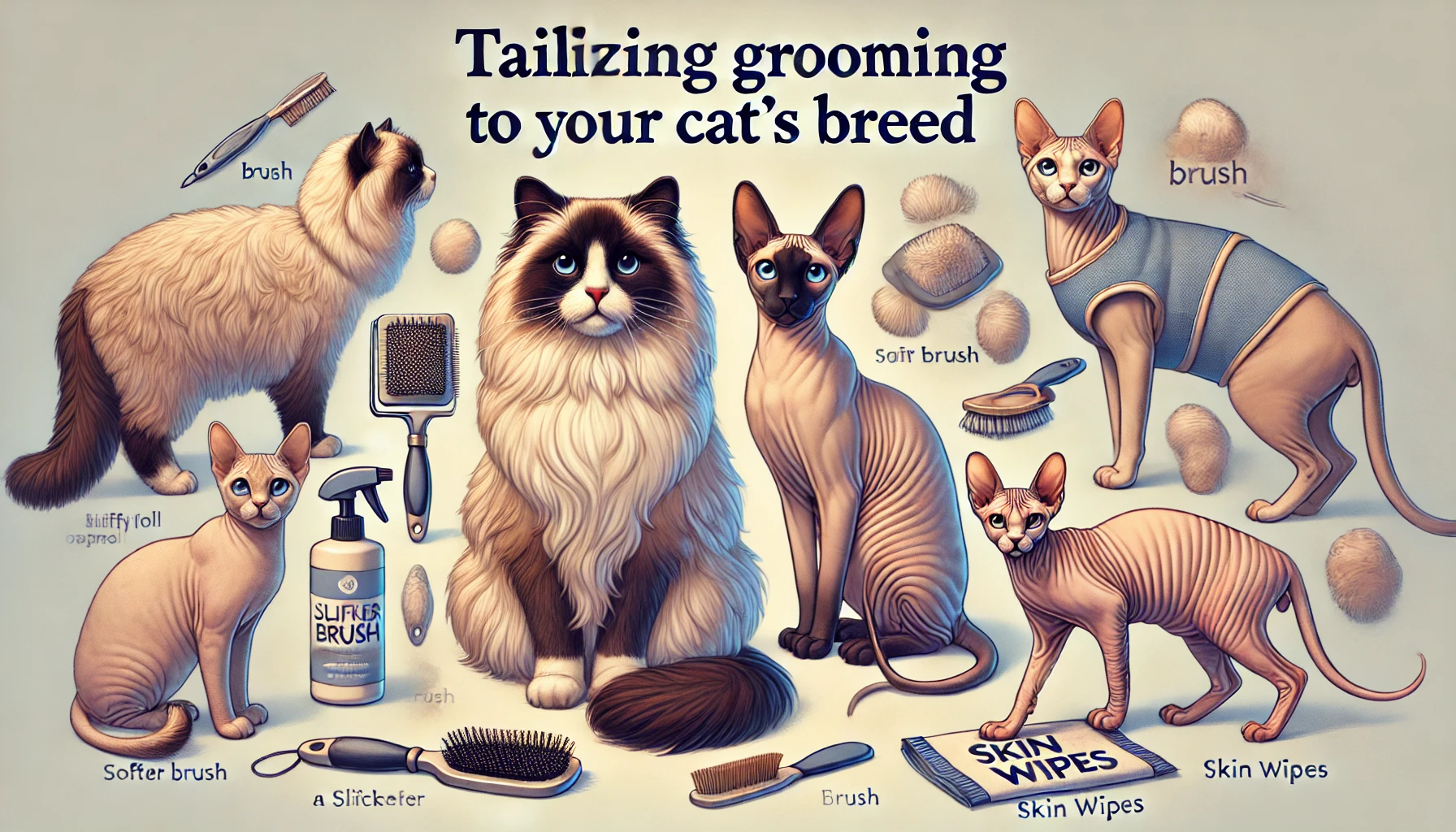
Tailoring Grooming to Your Cat’s Breed
Each breed has unique grooming needs based on their coat or skin type.
Short-haired cats may require less frequent grooming, while long-haired breeds need more intensive care to prevent tangles and mats.
Hairless breeds need special attention to skin health to avoid rashes and irritation.
Using the right grooming tools for your cat’s breed ensures their comfort and maintains a clean, healthy coat.
By investing time in understanding their unique needs, you can establish a grooming routine that keeps your cat happy and looking their best.
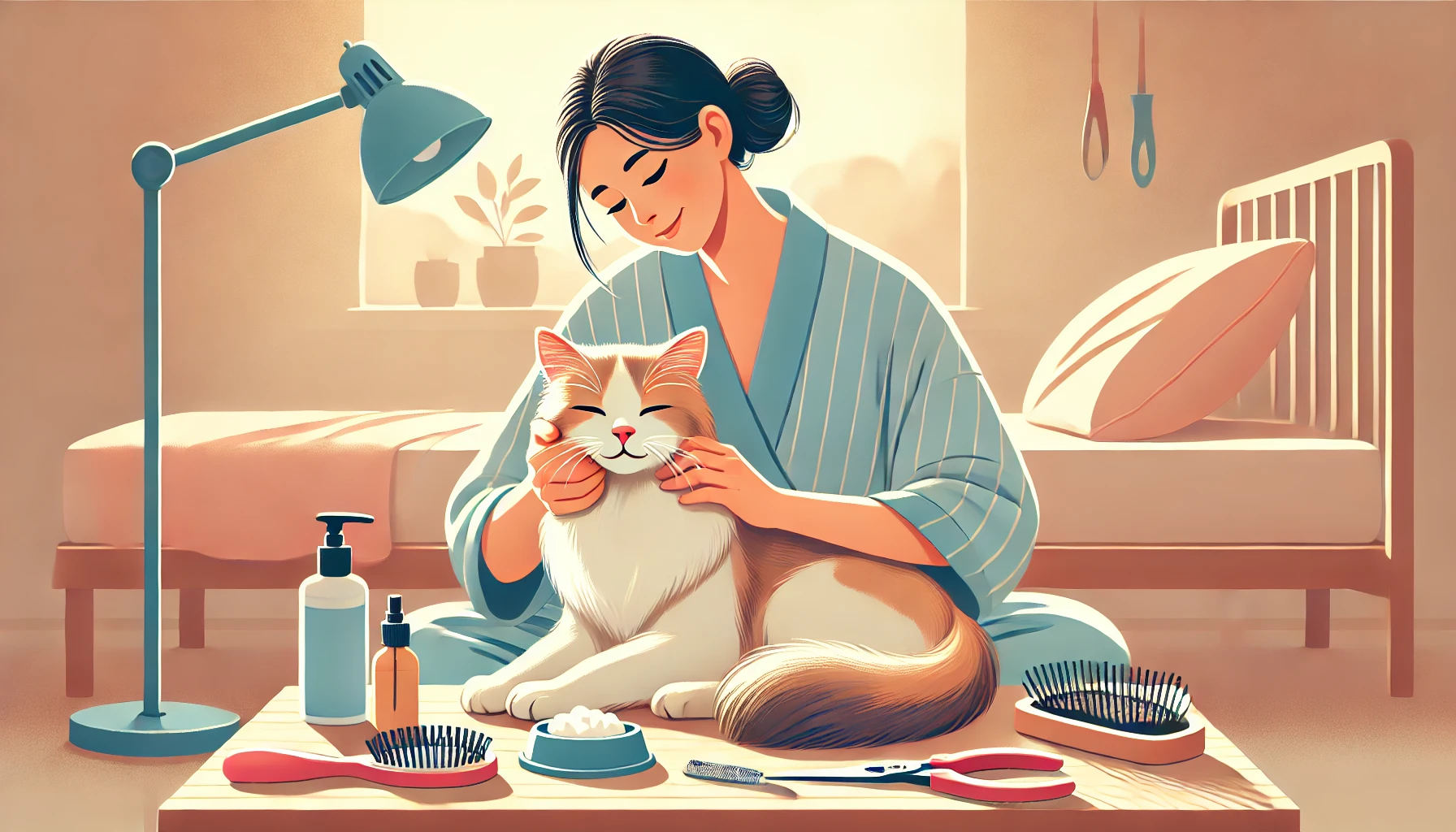
Building a Regular Grooming Routine
Establishing a regular grooming routine helps prevent common issues like shedding, hairballs, and skin problems.
Consistency is key, and incorporating grooming into your cat’s weekly care will help them become more tolerant of the process, making it more enjoyable for both you and your cat.
Here are some tips to make grooming easier:
- Start grooming when your cat is relaxed and calm.
- Use treats to reward good behavior during grooming sessions.
- Take breaks if your cat becomes stressed or agitated.
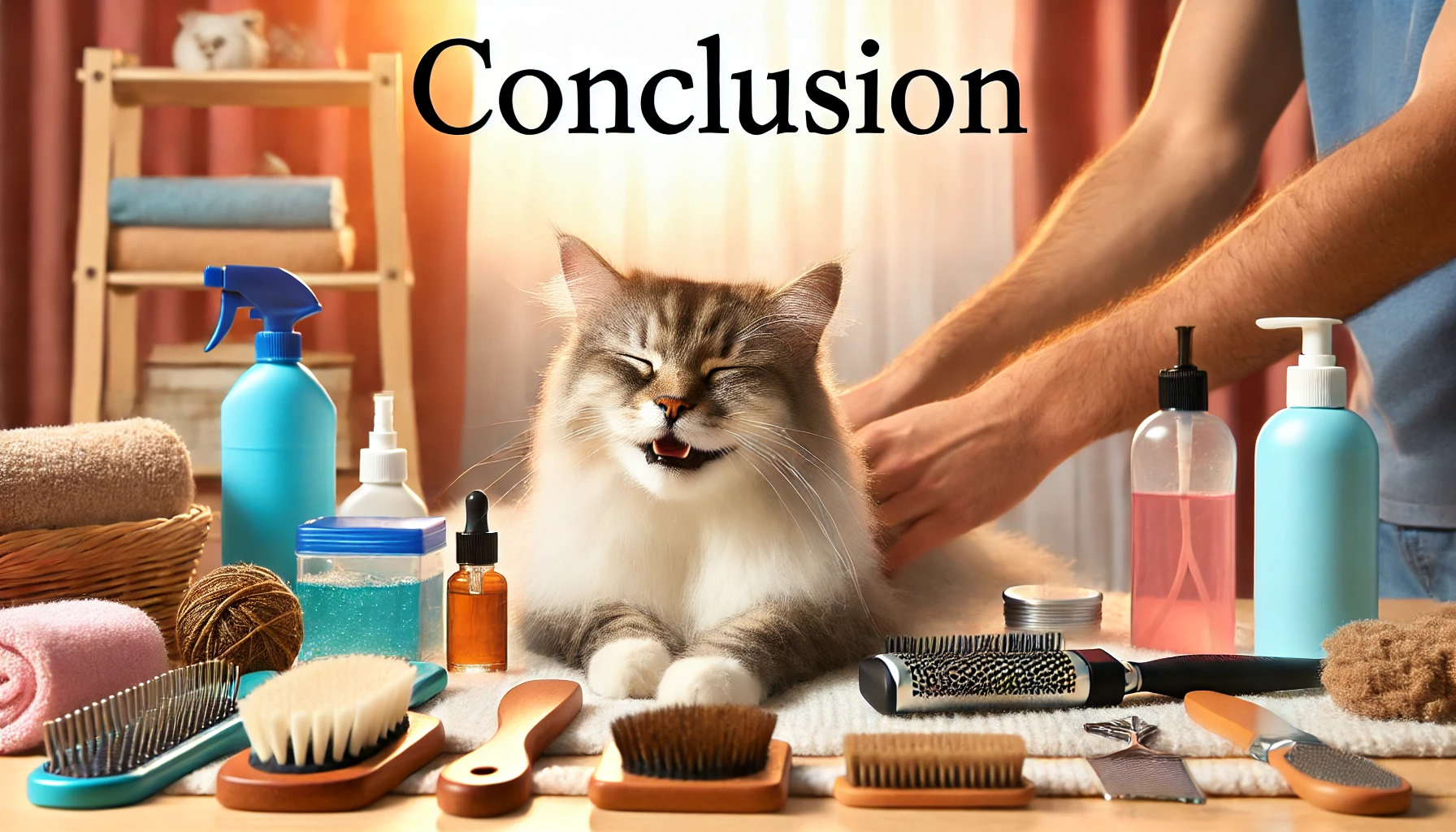
Conclusion
By choosing the right grooming accessories for your cat, you are investing in their long-term health and happiness.
Grooming is not just about making your cat look and feel good, but also about keeping them comfortable and free from problems like fleas, mats, and skin irritation.
With the right equipment and a regular grooming routine, you will ensure a shiny, healthy coat and a stronger bond with your pet.
Remember, each cat is unique, and their grooming needs should be tailored to their specific requirements.
With the appropriate grooming accessories, every grooming session can be a positive experience for both you and your feline friend.
By investing in the right grooming accessories, you ensure your cat stays comfortable, healthy, and happy. A consistent grooming routine makes a significant difference in their overall well-being.
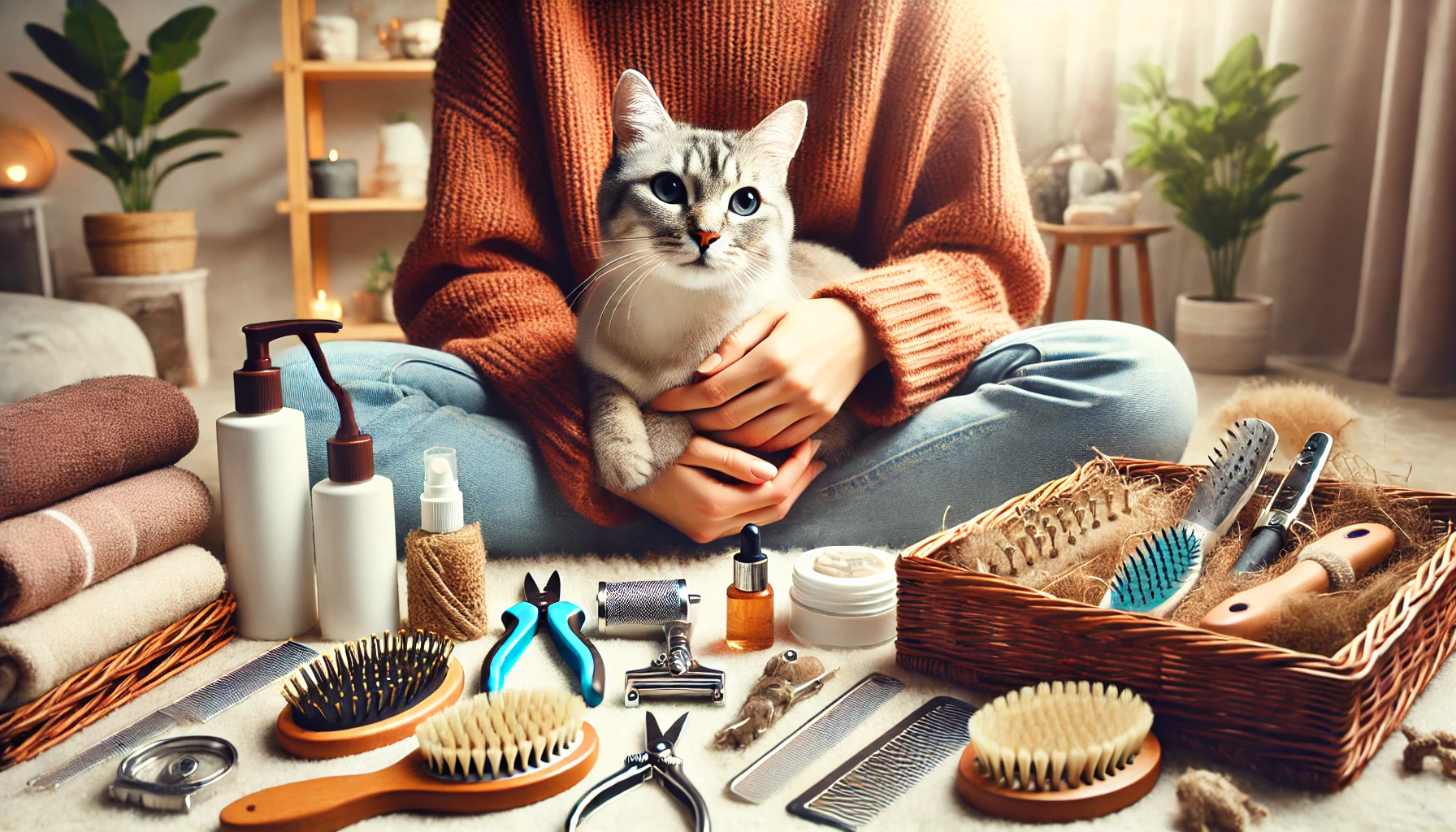
Frequently Asked Questions About Grooming Accessories for Cats
Grooming your cat requires the proper accessories to keep their coat and skin healthy.
Below are some of the commonly asked questions that most cat owners have about grooming accessories and how to use them comfortably.
How often should I brush my cat?
Short-haired cats require less brushing, typically once a week.
Long-haired cats benefit from daily brushing to prevent mats and tangles.
Regular brushing reduces shedding and keeps your cat’s coat healthy and clean.
What kind of brush is best for a long-haired cat?
A slicker brush is ideal for long-haired cats as it helps remove tangles, mats, and loose fur.
A wide-tooth comb is also effective, especially for thicker coats like those of Persians or Maine Coons.
Can I use human shampoo to bathe my cat?
No, human shampoo is too strong for a cat’s sensitive skin.
Always use cat-specific shampoos, which are formulated to clean their fur without causing irritation, dryness, or allergic reactions.
What should I do if my cat hates grooming?
Start grooming your cat when they are relaxed, and offer treats during the process.
Go slowly, and shorten grooming sessions if your cat becomes stressed or agitated.
Do hairless cats need grooming?
Yes, hairless cats, such as the Sphynx, require regular skin care.
Use gentle wipes or a mild cleanser to keep their skin clean, and consider applying moisturizing lotions to prevent dryness or irritation.
How often should I trim my cat's nails?
Trim your cat’s nails every 2-4 weeks to prevent overgrown claws.
Regular nail trimming keeps your cat comfortable and prevents damage to furniture or household items.
Can flea combs be used on all types of cats?
Yes, flea combs can be used on all cat breeds.
They are a non-toxic and effective way to detect and remove fleas, flea dirt, and eggs without using chemical treatments.
What grooming tools does a short-haired cat need?
A soft-bristle brush or rubber grooming mitt is sufficient for short-haired cats.
These tools help remove loose fur, reduce shedding, and keep their coat smooth and shiny.
Are there alternatives to bathing if my cat dislikes water?
Yes, waterless shampoos are a great alternative for cats that dislike water.
Available in spray or foam forms, these shampoos clean your cat’s coat without needing to be rinsed, making the process stress-free.

